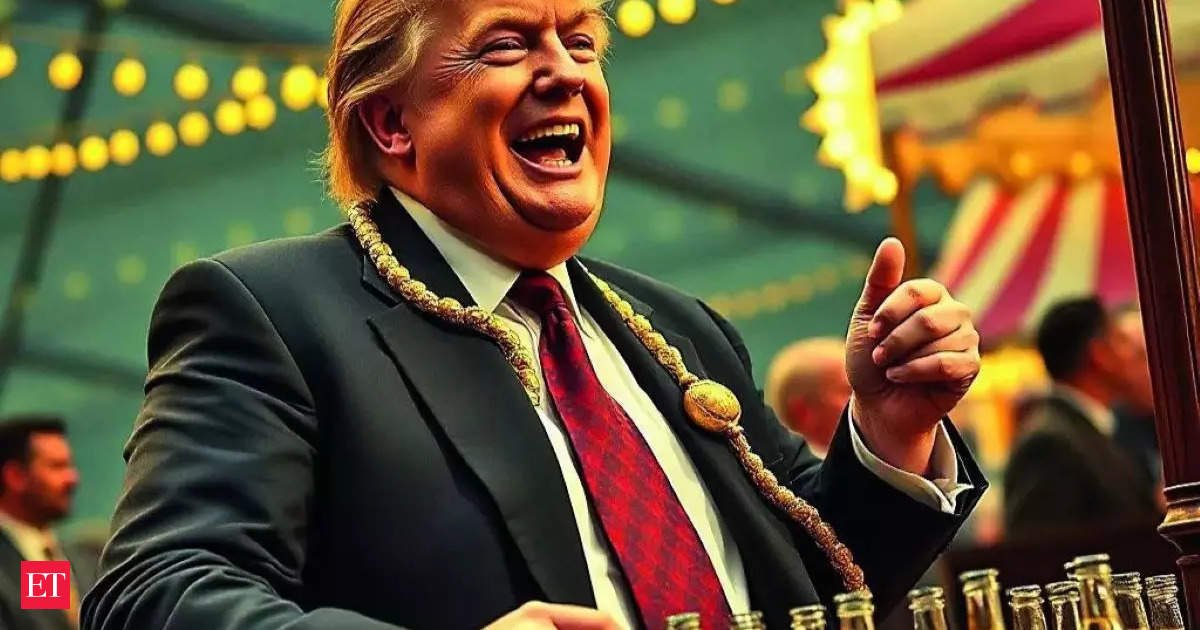Donald Trump‘s return to the White House could ripple through India’s energy sector in two distinct ways: by reshaping bilateral energy ties, and by altering the broader currents of the global oil and gas market.
During Trump 1.0, India’s energy ties with the US deepened. The latter received its first US crude shipment in 2017 after Washington lifted the export ban in 2015, and its first US LNG cargo under a long-term deal in 2018. During Trump’s tenure, an Indian company faced pressure to stitch an LNG deal, involving equity in a US liquefaction terminal project, but the deal fell through. India was also urged to buy and store oil in the US strategic petroleum reserve to help manage the Covid-induced oil glut. But the idea faded as the market stabilised.
Trump often leveraged cross-border deals to demonstrate his dealmaking abilities, framing them as victories for the US. He consistently pressured countries, including India and China, to take more US crude and LNG.
In the years that Trump was out of the White House, global oil and gas trade flows radically changed due to the sanctions triggered by the Ukraine war, which shut out most Russian oil and gas from Europe, redirecting supplies to India and China. This shift benefited the US, as half of its oil exports and two-thirds of its LNG exports now go to Europe, up from the levels during Trump 1.0.
Rising oil and gas output in the US and an expected global LNG glut from 2026 onwards mean that Trump may continue pushing countries to import more US energy. The US is India’s 6th- largest crude supplier, and 2nd-largest long-term LNG supplier.
The bigger picture, however, involves how Trump’s policies will affect global oil and gas markets. The oil market, burdened by oversupply and weak Chinese demand, barely reacted to Trump’s re-election, though his approach is likely to differ from Biden’s. During his presidency, Trump enjoyed a decent equation with Saudi Arabia, even as the kingdom was caught in the controversy over the killing of journalist Jamal Khashoggi. Trump’s price-critical tweets were interpreted by the oil market as calming signals.
In contrast, Biden had a frosty start with the Saudis, whose supply decisions strongly affect oil prices. The kingdom didn’t respond to his call for increased production after the oil market went berserk in early 2022 following the Russian invasion of Ukraine. Biden shifted strategy to release an unprecedented volume from the US strategic reserve to stabilise the market.
Biden imposed massive sanctions on Russia, the world’s 2nd-largest crude exporter, but allowed Russian oil to flow to the global market to ensure price stability. He was also lenient with Iran’s oil exports, which Trump had sanctioned. Iran’s exports almost entirely go to China. This leniency helped maintain market stability at a time when OPEC+ had curtailed about 5% of global supplies, and the West was reeling from high inflation.
Trump, with his strong views on Iran and China, may enforce stricter sanctions on Iran, potentially reducing global supplies by 1-1.5%. However, this may not destabilise the global market, as Saudi Arabia could seize the opportunity to fill the supply gap by releasing barrels it has withheld and is now desperate to bring back.
The US is today the world’s largest oil and gas producer, and nearly insulated from supply disruptions. But it remains exposed to price shocks.
Trump dreams of America’s ‘energy dominance’, not just ‘energy independence’, and has promised support to the local oil and gas industry. ‘As president, I will set a national goal of ensuring that America has the No. 1 lowest cost of energy of any industrial country anywhere on Earth,’ he said during his campaign. Trump’s policies will need to balance returns on investment for the industry with consumer affordability.
Trump has claimed he could end the Ukraine war in 24 hours, and if he succeeds in brokering peace, easing sanctions could become part of the deal. However, it’s unlikely he would let Russian oil and gas freely flow back to Europe, as US energy exports to Europe have become increasingly important. If Moscow’s exports to Europe remain constrained, discounts on Russian oil could continue to benefit Indian and Chinese refiners. Lower oil prices in general would aid Indian refiners’ profits.
In India, petrol and diesel prices are mostly insulated from global fluctuations, as state-run companies follow GoI signals more than international market trends. But expect Trump to keep pressing India to sign more oil and LNG deals with the US.
(Disclaimer: The opinions expressed in this column are that of the writer. The facts and opinions expressed here do not reflect the views of www.economictimes.com.)
